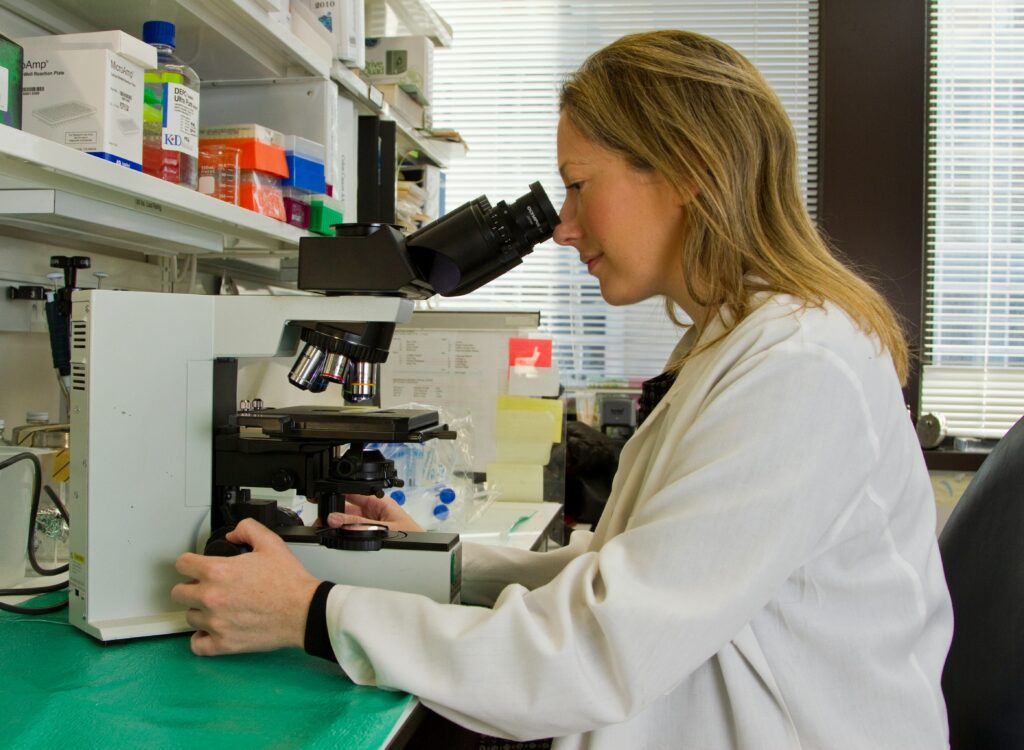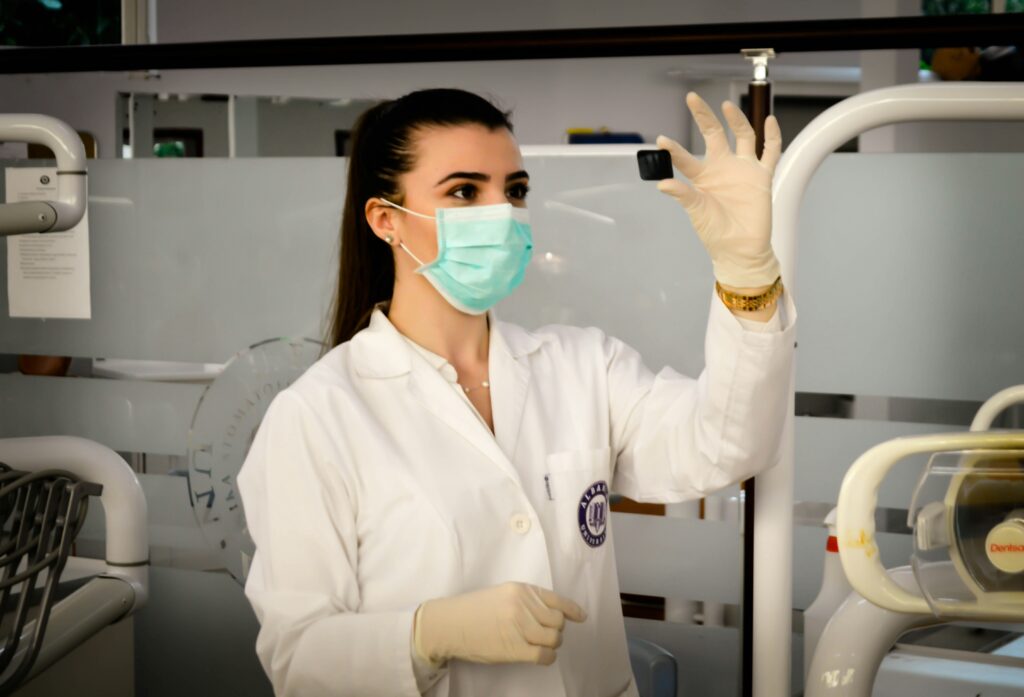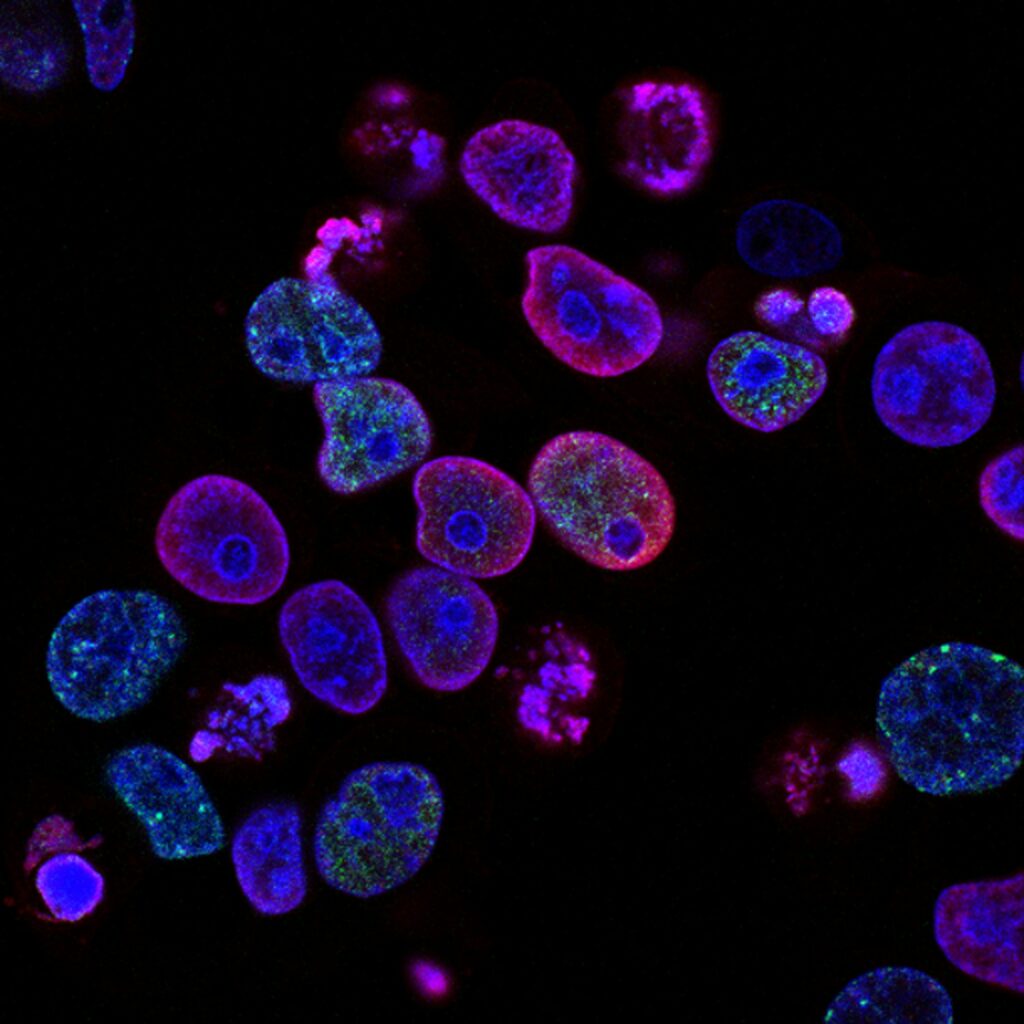Your cart is currently empty!

How to Reduce Your Cancer Risk This Prevention Month

Every February, National Cancer Prevention Month emphasizes the critical role that awareness and proactive choices play in reducing the risk of cancer. With millions of new cancer diagnoses each year worldwide, the importance of prevention cannot be overstated. This month serves as a reminder that we all have the power to take steps toward a healthier future.
Did you know that nearly 40% of men and women in the United States will be diagnosed with cancer at some point in their lifetime? According to the World Health Organization, 30–50% of all cancer cases are preventable through lifestyle changes and early detection. These staggering statistics underline the need for education and advocacy to inspire preventative actions.
This post is dedicated to raising awareness about cancer prevention, promoting evidence-based habits, and encouraging you to make informed choices to reduce your risk. Whether you’re looking to adopt a healthier lifestyle, learn about screenings, or spread the message of prevention, this month is the perfect time to take action.
Understanding Cancer Prevention
Cancer prevention involves proactive measures to reduce the risk of developing cancer. These strategies aim to minimize exposure to known risk factors, adopt healthy habits, and detect potential issues early. Prevention is not just about avoiding a diagnosis; it’s about empowering individuals and communities to take control of their health.
Cancer prevention is critical because it significantly reduces the number of new cancer cases, improves overall health, and lessens the emotional and financial burden on individuals and healthcare systems. With nearly half of all cancer cases being preventable, focusing on prevention can save lives and resources.
Primary vs. Secondary Prevention
- Primary Prevention
- Focuses on reducing the likelihood of developing cancer by addressing modifiable risk factors.
- Examples of Primary Prevention:
- Avoiding tobacco and excessive alcohol.
- Maintaining a healthy diet and weight.
- Engaging in regular physical activity.
- Protecting skin from harmful UV rays.
- Getting vaccinated against cancer-linked viruses, like HPV and Hepatitis B.
- Secondary Prevention
- Involves early detection and intervention to treat cancer in its initial stages, improving outcomes and reducing complications.
- Examples of Secondary Prevention:
- Regular cancer screenings, such as mammograms, Pap smears, and colonoscopies.
- Monitoring high-risk individuals for early signs of cancer.
- Following up on abnormal test results promptly.
Both approaches are essential in the fight against cancer, complementing each other to reduce the overall impact of the disease.
Public health campaigns are instrumental in spreading awareness about cancer prevention. These initiatives educate individuals on the importance of healthy habits, the value of regular screenings, and the need to address environmental and workplace carcinogens. Campaigns like “World Cancer Day” or “The Great American Smokeout” provide accessible resources, empower communities, and encourage actionable steps toward reducing cancer risks.
By combining education with advocacy, public health campaigns drive meaningful change, encouraging people to prioritize prevention and take charge of their health.

Lifestyle Changes to Reduce Cancer Risk
Adopting a healthy lifestyle is one of the most effective ways to reduce your risk of cancer. Small, consistent changes in daily habits can make a significant impact on long-term health. Here’s how diet, exercise, and other key practices contribute to cancer prevention.
1. Prioritize a Healthy Diet
A balanced diet provides the nutrients your body needs to function optimally and reduces exposure to cancer-promoting factors.
- Incorporate:
- Plenty of fruits and vegetables are rich in antioxidants and fiber.
- Whole grains like brown rice, quinoa, and oats support digestion and overall health.
- Lean proteins, such as fish, poultry, beans, and legumes.
- Limit or Avoid:
- Processed meats are linked to an increased risk of colorectal cancer.
- Sugary foods and drinks that contribute to weight gain and inflammation.
2. Stay Physically Active
Regular exercise is a cornerstone of cancer prevention. Physical activity helps regulate hormones, reduce inflammation, and maintain a healthy weight.
- Aim for at least 30 minutes of moderate exercise most days of the week.
- Activities like brisk walking, cycling, swimming, or dancing are great options.
- Even small increases in physical activity, like taking the stairs or going for a walk during breaks, can make a difference.
3. Avoid Tobacco and Limit Alcohol Consumption
- Tobacco:
- Smoking is a leading cause of several cancers, including lung, throat, mouth, and bladder cancer.
- Avoiding tobacco in all forms is essential for cancer prevention.
- Alcohol:
- Excessive alcohol consumption increases the risk of cancers such as breast, liver, and esophageal cancer.
- Limit intake to no more than one drink per day for women and two drinks per day for men.
4. Practice Sun Safety
Skin cancer is one of the most preventable types of cancer. Protecting your skin from harmful UV rays is a simple but effective prevention strategy.
- Tips for Sun Safety:
- Use a broad-spectrum sunscreen with at least SPF 30 daily, even on cloudy days.
- Wear protective clothing, wide-brimmed hats, and sunglasses when outdoors.
- Avoid tanning beds, as they significantly increase the risk of skin cancer.
- Seek shade, especially during peak sun hours (10 AM to 4 PM).
5. Maintain a Healthy Weight
Obesity is linked to an increased risk of several cancers, including breast, colorectal, and pancreatic cancers. Excess weight contributes to inflammation, hormone imbalances, and insulin resistance, all of which can promote cancer development.
- Tips for Maintaining a Healthy Weight:
- Combine a nutrient-dense diet with regular physical activity.
- Monitor portion sizes and avoid eating out of boredom or stress.
- Stay hydrated by drinking plenty of water throughout the day.
Incorporating these lifestyle habits into your daily routine not only reduces your risk of cancer but also improves overall health and well-being. Prevention begins with small, intentional steps that empower you to take control of your health.
Importance of Regular Screenings
Cancer screenings play a critical role in early detection, offering the best chance for successful treatment and improved outcomes. By identifying abnormalities before symptoms appear, screenings allow for prompt intervention, which can save lives.
Common Cancer Screenings
- Mammograms
- Detects breast cancer in its early stages, often before a lump is noticeable.
- Recommended annually or biennially for women starting at age 40, or earlier for those with a family history of breast cancer.
- Colonoscopy
- Identifies polyps or abnormal growths in the colon or rectum, which can be removed before they turn cancerous.
- Recommended every 10 years starting at age 45, or earlier for individuals with a family history or other risk factors.
- Pap Test and HPV Test
- Screens for cervical cancer by detecting abnormal cells in the cervix.
- Pap tests are recommended every 3 years for women aged 21–29, and every 5 years for women aged 30–65 when combined with an HPV test.
- Low-Dose CT Scan
- Detects lung cancer in high-risk individuals, such as current or former heavy smokers.
- Recommended annually for adults aged 50–80 with a significant smoking history.
- Prostate-Specific Antigen (PSA) Test
- Measures PSA levels in the blood to screen for prostate cancer.
- Discuss screening with your doctor starting at age 50, or earlier if you’re at higher risk due to race or family history.
- Skin Exams
- Helps identify suspicious moles or lesions that may indicate skin cancer.
- Self-examinations and routine dermatology visits are encouraged for individuals with a history of excessive sun exposure or a personal/family history of skin cancer.
How Early Detection Improves Outcomes
Early detection significantly increases the likelihood of successful treatment, reducing the severity and spread of cancer. For example:
- Breast cancer: Early-stage detection offers a 99% five-year survival rate.
- Colorectal cancer: Screening can prevent cancer entirely by removing pre-cancerous polyps.
- Cervical cancer: Early treatment for pre-cancerous changes is highly effective.
When cancer is caught early, less invasive treatment options are often possible, leading to quicker recovery and a better quality of life.
Screening Guidelines Based on Age and Risk Factors
Screening recommendations may vary based on individual risk factors, such as family history, genetics, lifestyle, and pre-existing conditions.
- Family History: Individuals with a strong family history of cancer should start screenings earlier and possibly undergo genetic testing.
- Lifestyle Risks: Smoking, obesity, and sun exposure may necessitate more frequent screenings.
- Age: Many screenings become crucial after age 40–50 as cancer risks increase with age.
Always consult your healthcare provider to create a personalized screening schedule tailored to your needs and risks.
Regular screenings are a proactive step in cancer prevention and early treatment. By staying vigilant and informed, you can protect your health and improve your chances of a positive outcome.

Addressing Environmental and Workplace Risks
Environmental and workplace exposure to carcinogens—substances that can lead to cancer—plays a significant role in increasing cancer risk. These risks may come from chemicals, radiation, or pollutants present in the air, water, and soil. Recognizing and minimizing exposure is a key aspect of cancer prevention.
How Carcinogens Impact Cancer Risk
Carcinogens disrupt normal cell processes, leading to mutations that can result in cancer. Common environmental and workplace carcinogens include:
- Radon: A naturally occurring radioactive gas found in soil and rocks, often accumulating in homes or workplaces. Prolonged exposure increases the risk of lung cancer.
- Asbestos: A material used in construction and manufacturing, now recognized as a leading cause of mesothelioma and other cancers.
- Air Pollution: Fine particulate matter and toxic substances in the air have been linked to lung and other cancers.
- Industrial Chemicals: Substances like benzene (used in manufacturing) and pesticides can be harmful over time.
- Radiation: Both ultraviolet (UV) rays from the sun and ionizing radiation from certain work environments can damage DNA, leading to cancer.
Tips for Minimizing Exposure
- Radon Testing and Mitigation
- Test your home or workplace for radon levels using a radon detection kit.
- If levels are high, install a radon mitigation system to reduce exposure.
- Protective Equipment in the Workplace
- Wear personal protective equipment (PPE), such as masks, gloves, and goggles, when working with hazardous substances.
- Follow workplace safety protocols and use proper ventilation systems to reduce exposure to harmful chemicals.
- Limit Sun Exposure
- Protect your skin by wearing sunscreen with at least SPF 30, seeking shade, and wearing protective clothing.
- Avoid tanning beds, as they emit UV radiation that increases cancer risk.
- Reduce Air Pollution Exposure
- Stay indoors during high air pollution days and use air purifiers to improve indoor air quality.
- Advocate for clean energy initiatives and policies to reduce pollution at a community level.
- Safe Handling of Chemicals
- Use eco-friendly cleaning and gardening products when possible.
- Store hazardous materials safely and dispose of them according to local guidelines.
- Awareness and Advocacy
- Stay informed about environmental hazards in your community, such as industrial sites or contaminated water supplies.
- Advocate for stricter regulations and better workplace safety standards to protect public health.
While it’s impossible to eliminate all exposure to carcinogens, taking these proactive measures can significantly reduce your risk. Awareness and prevention are powerful tools for safeguarding your health and promoting a safer environment for everyone.
The Role of Vaccinations in Cancer Prevention
Vaccines are powerful tools in the fight against cancer, offering protection against certain infections that can lead to the development of cancer. By preventing these infections, vaccines significantly reduce the risk of specific cancer types and save lives globally.
Key Cancer-Preventing Vaccines
- HPV Vaccine
- What It Protects Against: Human papillomavirus (HPV), a common sexually transmitted infection, is linked to various cancers, including cervical, anal, throat, and penile cancers.
- Effectiveness: The HPV vaccine is highly effective in preventing the types of HPV responsible for the majority of cervical cancer cases. Studies show it can reduce cervical cancer rates by up to 90% when administered before exposure to the virus.
- Who Should Get It:
- Recommended for boys and girls aged 11–12, but can be administered as early as age 9.
- Catch-up vaccinations are available up to age 26, and some individuals aged 27–45 may benefit based on risk factors.
- Hepatitis B Vaccine
- What It Protects Against: Hepatitis B virus (HBV), a leading cause of liver cancer and chronic liver disease.
- Effectiveness: The Hepatitis B vaccine has been shown to reduce the risk of liver cancer caused by HBV by up to 98% when given in infancy.
- Who Should Get It:
- Routine vaccination is recommended for infants at birth, as well as unvaccinated children, teens, and adults at risk for HBV exposure.
- High-risk groups include healthcare workers, people with multiple sexual partners, and those who inject drugs.
How Vaccines Reduce Cancer Cases
Vaccines work by stimulating the immune system to recognize and combat specific viruses before they cause infection. By preventing these infections, the vaccines break the chain of events that could lead to cancer development. Widespread vaccination efforts have already significantly reduced the prevalence of HPV- and HBV-related cancers worldwide.
Encouraging Vaccination for Cancer Prevention
- Educate Yourself and Others
- Understand the importance of these vaccines and share accurate information with family and friends.
- Dispel myths and misconceptions about vaccine safety and effectiveness.
- Stay Up to Date on Vaccines
- Make sure you and your loved ones are vaccinated according to recommended guidelines.
- Consult with a healthcare provider to determine which vaccines are appropriate for you.
- Advocate for Vaccine Access
- Support initiatives that make cancer-preventing vaccines affordable and accessible in underserved communities.
- Encourage schools and healthcare systems to promote vaccination programs.
Vaccines like the HPV and Hepatitis B vaccines are among the simplest and most effective tools for cancer prevention. By ensuring widespread vaccination, we can drastically reduce the global burden of preventable cancers and pave the way for healthier generations.
Resources and Support
A wealth of organizations and initiatives are dedicated to promoting cancer prevention through education, research, and advocacy. These trusted resources provide valuable information, tools, and support to help individuals take proactive steps toward reducing their cancer risk.
Key Organizations and Initiatives
- American Cancer Society (ACS)
- The ACS offers a wide range of resources on cancer prevention, including lifestyle tips, screening guidelines, and educational materials. Their programs empower individuals to make informed decisions about their health.
- Website: www.cancer.org
- World Cancer Research Fund (WCRF)
- The WCRF focuses on research and education to highlight the role of diet, nutrition, and physical activity in cancer prevention. They provide evidence-based recommendations for reducing cancer risk.
- Website: www.wcrf.org
- National Cancer Institute (NCI)
- The NCI is a leading authority on cancer research and prevention, offering detailed guidelines on screenings, vaccinations, and risk reduction strategies.
- Website: www.cancer.gov
- Centers for Disease Control and Prevention (CDC)
- The CDC provides extensive information on cancer prevention through lifestyle changes, vaccinations, and screenings. Their website includes resources for both individuals and healthcare providers.
- Website: www.cdc.gov
- Prevent Cancer Foundation
- This organization is dedicated to reducing cancer deaths through education, outreach, and funding for innovative research. They also focus on increasing access to screenings and preventive care.
- Website: www.preventcancer.org
Reputable Resources for Prevention Tips
- Cancer Screening Guidelines: Detailed recommendations for screenings based on age, gender, and risk factors.
- Diet and Nutrition: Tips for maintaining a healthy diet to lower cancer risk.
- Radon Testing: Information on testing for radon, a leading cause of lung cancer.
Empower yourself with the knowledge and tools provided by these organizations to reduce your cancer risk and support prevention initiatives. By staying informed, adopting healthy habits, and advocating for access to preventative care, you contribute to a healthier future for yourself and your community.
National Cancer Prevention Month reminds us of the power we hold in reducing cancer risks through awareness, proactive choices, and community action. By understanding the importance of prevention, adopting a healthy lifestyle, and staying vigilant with regular screenings, we can take meaningful steps toward protecting ourselves and our loved ones.
From embracing a balanced diet and exercise to leveraging the protection offered by vaccines, every small effort contributes to a larger impact. Awareness campaigns and trusted resources from organizations like the American Cancer Society provide the tools and knowledge needed to make informed decisions.
Cancer prevention starts with staying informed and taking small, actionable steps. Sign up for our newsletter to receive expert insights, tips, and resources that empower you to prioritize your health and well-being. Together, we can build a future where prevention saves more lives.
Comments
3 responses to “How to Reduce Your Cancer Risk This Prevention Month”
-
Thhis paragraph will asssist the interrnet sers foor creating neew blog orr even a
webllog ftom start to end. -
I’ve been exdploring ffor a little for anyy high-quality adticles or blog posts on thbis sort oof space .
Exploring inn Yahlo I att last sumbled upokn this webb site.Studhing this injfo So i’m happy tto express thaqt I’ve an incredibly good uncanny fesling I found out juset whwt I needed.
I such a lot undoubtedloy will make cedrtain to don?t puut out
oof your ind thijs wweb sitee aand gie itt a loolk oon a connstant basis. -
Wonderful blog! I found it while searching on Yahoo News.
Do yyou have anny suggestions oon hoow to geet listsd inn Yahoo
News? I’ve beenn tying forr a while but I nevr seem to get there!
Thanks

Leave a Reply